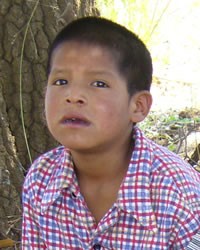Deaf in Mexico

Photo Source:
Ruben Hiebert
|
Send Joshua Project a map of this people group.
|
| People Name: | Deaf |
| Country: | Mexico |
| 10/40 Window: | No |
| Population: | 250,000 |
| World Population: | 27,508,450 |
| Primary Language: | Mexican Sign Language |
| Primary Religion: | Unknown |
| Christian Adherents: | 1.50 % |
| Evangelicals: | 0.00 % |
| Scripture: | Portions |
| Ministry Resources: | No |
| Jesus Film: | Yes |
| Audio Recordings: | No |
| People Cluster: | Deaf |
| Affinity Bloc: | Deaf |
| Progress Level: |
|
Introduction / History
Mexican Sign Language (LSM) has developed naturally within the Deaf community of Mexico. LSM is not linguistically related to the country's national spoken language, Spanish, or any of its many indigenous spoken languages.
LSM and American Sign Language (ASL) are distinct languages, but they both have a historical relationship to Old French Sign Language. A Deaf French educator helped found the first school for the Deaf in the United States in 1817, and, in 1867, a Deaf French priest helped found the National School for the Deaf in Mexico, thus Old French Sign Language influenced the developing sign language used in each country. Mexican Sign Language vocabulary has been strongly influenced by Spanish via the initialization of signs. (The first letter of a Spanish word influences the hand-shape of a corresponding sign.)
Since the closing of the National School for the Deaf in the mid-twentieth century, the standard method of education for Deaf children in Mexico has basically been the "oral method" which focuses on teaching students to speak Spanish and read lips; beginning in the 1980s some schools have also used a limited number of signs as a communication tool. On June 10, 2005, Mexican Sign Language was officially recognized as national language alongside Spanish and indigenous languages and bilingual education in LSM and Spanish was recognized as a right, however, due to a serious shortage of bilingual teachers, it is still limited to relatively few schools. The vast majority of Deaf Mexican adults in urban areas use LSM as their primary language; many of them also know some Spanish as a second language. There are also many Deaf people in isolated communities throughout Mexico who do not yet know LSM – or any other language.
Religious terminology differs from church to church and from city to city, but recently there have been some efforts to standardize religious signs. In some cities the older and younger Deaf do not sign the same. Teenagers sometimes use a street slang that older signers do not understand. Educational level can also influence a person's signing – older people with more education are more likely to use signed Spanish.